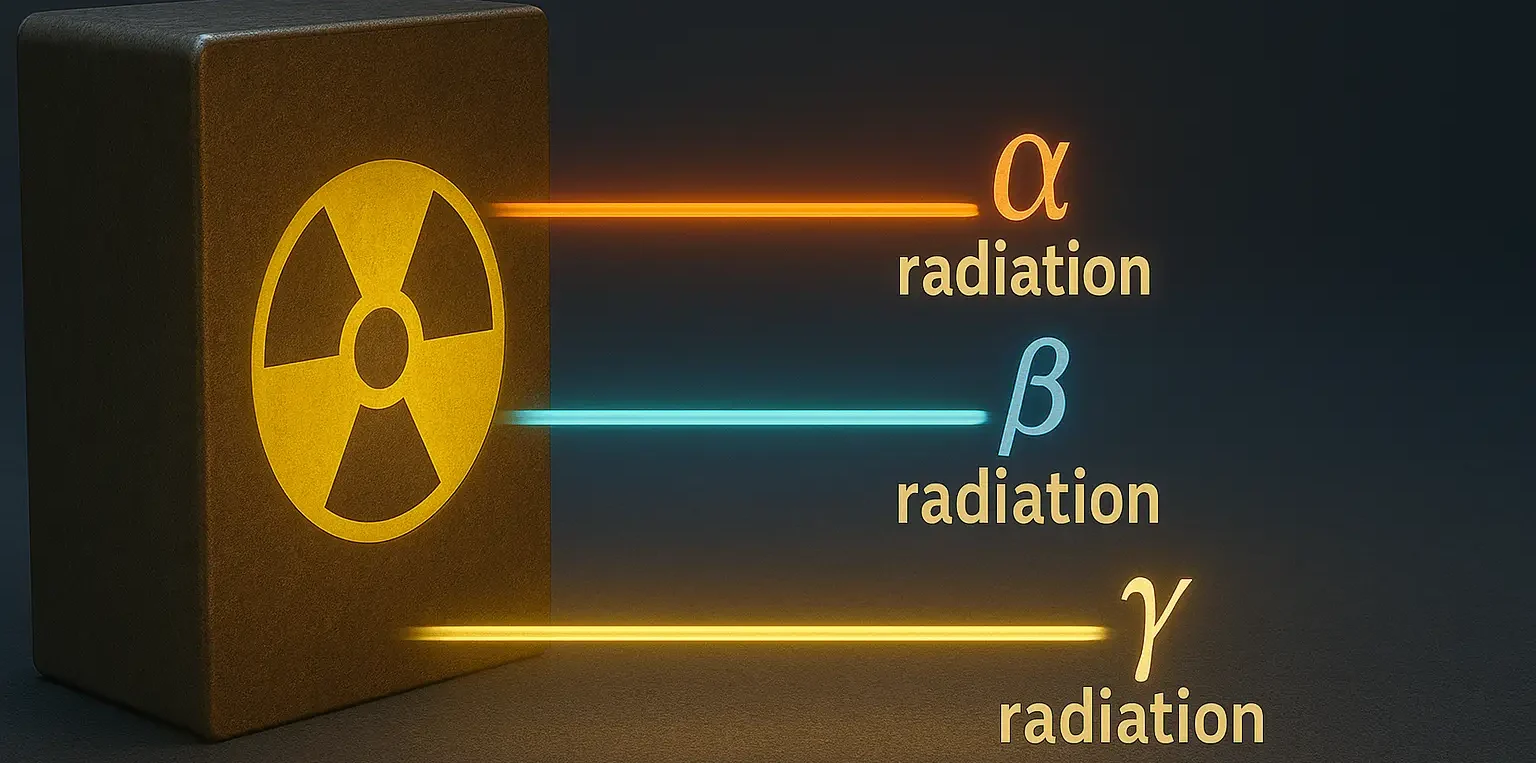- Alpha, beta, and gamma radiations are types of nuclear radiation: alpha consists of heavy, charged particles with low penetration, beta of light electrons/positrons with moderate penetration, and gamma of high-energy waves with deep penetration.
- Alpha (α), beta (β), and gamma (γ) radiation are three common types of ionizing radiation emitted during radioactive decay.
- They vary in their composition, charge, mass, penetrating power, and ionizing ability.
Alpha (α) Radiation
- Composition: Alpha particles consist of two protons and two neutrons, resembling a helium-4 nucleus.
- Charge: +2
- Mass: Relatively high (~6,644 MeV/c²)
- Penetrating Power: Low; can travel only a few centimeters in the air and are stopped by a sheet of paper or the outer layer of human skin.
- Ionizing Power: High; due to their large mass and charge, they cause significant ionization in matter, leading to substantial energy transfer.
Alpha Decay:
- An unstable nucleus emits an alpha particle (two protons and two neutrons).
- While alpha radiation poses little external hazard due to its low penetration, it is dangerous if ingested or inhaled, as it can damage internal tissues.
Beta (β) Radiation
- Composition: Beta particles are either electrons (β⁻) or positrons (β⁺), the antiparticles of electrons.
- Charge: -1 for electrons (β⁻), +1 for positrons (β⁺)
- Mass: Relatively low (~0.511 MeV/c²)
- Penetrating Power: Moderate; can travel a few meters in air and can be stopped by materials like plastic, glass, or aluminum.
- Ionizing Power: Lower than alpha particles but higher than gamma rays; they can ionize atoms as they pass through matter.
Advertisements
Beta Decay:
- Involves the emission of a beta particle, which can be an electron (beta minus decay) or a positron (beta plus decay).
- Beta particles have greater penetration than alpha particles but still require proper shielding, as they can penetrate the skin and damage living tissue.
Gamma (γ) Radiation
- Composition: Gamma rays are high-energy electromagnetic radiation, similar to X-rays but with higher energy.
- Charge: Neutral (no charge)
- Mass: None
- Penetrating Power: High; can pass through most materials and human tissue, requiring dense materials like lead or thick concrete for shielding.
- Ionizing Power: Lower than alpha and beta particles; although they ionize less efficiently, they can still cause ionization as they penetrate matter.
Gamma Decay:
- Occurs when a nucleus transitions from an excited state to a lower energy state, emitting gamma rays.
- Gamma radiation poses a significant external hazard due to its high penetration, necessitating proper shielding and safety measures.

